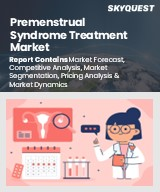
|
시장보고서
상품코드
1668156
소화기 OTC 의약품 시장 : 세계 산업 규모, 점유율, 동향, 기회, 예측 - 약제 클래스별, 적응증별, 최종사용자별, 지역별, 경쟁별(2020-2030년)Gastrointestinal OTC Drugs Market - Global Industry Size, Share, Trends, Opportunity, and Forecast, Segmented By Drug Class, By Indication, By End User, By Region & Competition, 2020-2030F |
||||||
세계의 소화기 OTC 의약품 시장 규모는 2024년에 415억 달러에 달하며, 2030년까지 CAGR은 6.15%로, 예측 기간 중 눈부신 성장이 전망되고 있습니다.
일반의약품(OTC) 위장약은 처방전 없이 구입할 수 있는 의약품으로, 일반적인 위장 증상이나 질환의 완화를 목적으로 합니다. 이러한 의약품은 일반적으로 불편함을 완화하거나 소화기 계통의 경미한 문제를 해결하기 위해 소비자가 직접 복용하는 의약품입니다. 소화기 OTC 의약품의 주요 장점 중 하나는 쉽게 구할 수 있다는 점입니다. 소비자는 처방전 없이도 이러한 제품을 구입할 수 있으며, 소매 약국, 약국, 슈퍼마켓, 온라인 플랫폼에서 쉽게 구할 수 있으며, OTC 의약품은 일반적으로 포장의 지침에 따라 또는 의료 전문가의 조언에 따라 사용하게 됩니다. 소화기 OTC 의약품은 라벨에 기재된 지침에 따라 사용하면 안전하고 효과적인 것으로 간주됩니다. 비처방약이라는 점은 경증에서 중등도의 위장 증상이 있는 사람들의 자가 치료에 적합하다는 것을 반영합니다. 그러나 중증 또는 만성 위장 증상이 있는 사람은 의료진의 지도를 받아야 합니다.
| 시장 개요 | |
|---|---|
| 예측 기간 | 2026-2030년 |
| 시장 규모 : 2024년 | 415억 달러 |
| 시장 규모 : 2030년 | 595억 1,000만 달러 |
| CAGR: 2025-2030년 | 6.15% |
| 급성장 부문 | 위산 억제제 |
| 최대 시장 | 북미 |
세계에서 고령화가 진행되면서 위장 문제가 발생하기 쉬워지고 있습니다. 고령화에 따라 소화기 질환이 발생하기 쉽기 때문에 OTC 위장약에 대한 수요가 증가하고 있습니다. 위장 건강 및 관련 문제에 대한 소비자의 인식이 높아짐에 따라 일반적인 소화기 질환에 대한 OTC 해결책을 찾게 될 것입니다. 교육 캠페인과 정보 보급이 이러한 인식 개선에 기여하고 있습니다. 식습관, 스트레스, 좌식 생활, 불규칙한 식습관, 불규칙한 식습관 등의 요인이 위장 문제를 유발합니다. 이러한 생활 습관은 증상 완화를 위한 OTC 의약품에 대한 수요를 증가시키고 있으며, OTC 의약품은 일반적인 위장 문제에 대처할 수 있는 비침습적이고 비용 효율적인 수단을 제공합니다. 많은 사람들이 처방약이나 의료 절차를 고려하기 전에 OTC 의약품을 선택하는 경우가 많습니다. 제약회사들은 소비자의 선호에 부응하기 위해 빠른 효과와 지속적인 완화 옵션, 츄어블 정제, 액상 제제 등 새로운 OTC 위장약 제형을 개발하며 혁신을 거듭하고 있습니다.
주요 시장이 해결해야 할 과제
제네릭 경쟁
주요 시장 동향
자연요법과 허브요법
목차
제1장 개요
제2장 조사 방법
제3장 개요
제4장 고객의 소리
제5장 세계의 소화기 OTC 의약품 시장 전망
- 시장 규모·예측
- 금액별
- 시장 점유율·예측
- 약제 클래스별(완하제, 소화기암 치료제, 위산 억제제, 지사제, 프로톤 펌프 저해제, H2 저해제, 위산 중화제, 장내 항염증약, 항구토제)
- 적응증별(위식도 역류증 또는 속쓰림, 변비, 설사, 멀미, 기타)
- 최종사용자별(병원 약국, 소매 약국, 온라인 약국, 기타)
- 지역별
- 기업별(2024)
- 시장 맵
제6장 아시아태평양의 소화기 OTC 의약품 시장 전망
- 시장 규모·예측
- 시장 점유율·예측
- 아시아태평양 : 국가별 분석
- 인도
- 호주
- 일본
- 한국
제7장 유럽의 소화기 OTC 의약품 시장 전망
- 시장 규모·예측
- 시장 점유율·예측
- 유럽 : 국가별 분석
- 독일
- 스페인
- 이탈리아
- 영국
제8장 북미의 소화기 OTC 의약품 시장 전망
- 시장 규모·예측
- 시장 점유율·예측
- 북미 : 국가별 분석
- 멕시코
- 캐나다
제9장 남미의 소화기 OTC 의약품 시장 전망
- 시장 규모·예측
- 시장 점유율·예측
- 남미 : 국가별 분석
- 아르헨티나
- 콜롬비아
제10장 중동 및 아프리카의 소화기 OTC 의약품 시장 전망
- 시장 규모·예측
- 시장 점유율·예측
- 중동 및 아프리카 : 국가별 분석
- 사우디아라비아
- 아랍에미리트
제11장 시장 역학
- 촉진요인
- 과제
제12장 시장 동향과 발전
- 최근 동향
- 제품 출시
- 합병과 인수
제13장 세계의 소화기 OTC 의약품 시장 : SWOT 분석
제14장 Porter's Five Forces 분석
- 업계내 경쟁
- 신규 참여의 가능성
- 공급업체의 힘
- 고객의 힘
- 대체품의 위협
제15장 PESTEL 분석
제16장 경쟁 구도
- Viatris Inc.
- Sandoz Group AG
- Johnson & Johnson Services, Inc.
- Sun Pharmaceuticals Industries Limited
- Teva Pharmaceuticals Industries Ltd.
- Zydus Life science Ltd.
- Sanofi SA
- Bayer AG
- Pfizer Inc.
- GlaxoSmithKline Plc
제17장 전략적 제안
제18장 조사회사 소개·면책사항
KSA 25.04.08Global Gastrointestinal OTC Drugs Market was valued at USD 41.50 Billion in 2024 and is anticipated to witness an impressive growth in the forecast period with a CAGR of 6.15% through 2030. Gastrointestinal over the counter (OTC) drugs are medications that are available without a prescription and are designed to provide relief from a range of common gastrointestinal symptoms and conditions. These drugs are typically self-administered by consumers to alleviate discomfort and manage minor digestive issues. One of the primary advantages of gastrointestinal OTC drugs is their accessibility. Consumers can purchase these products without the need for a prescription, making them readily available at retail pharmacies, drug stores, supermarkets, and online platforms. OTC drugs are typically used as directed on the packaging or as advised by a healthcare professional. Gastrointestinal OTC drugs are considered safe and effective when used according to the labeled instructions. Their non-prescription status reflects their suitability for self-medication by individuals experiencing mild to moderate gastrointestinal symptoms. However, individuals with severe or chronic gastrointestinal conditions should seek guidance from a healthcare provider.
| Market Overview | |
|---|---|
| Forecast Period | 2026-2030 |
| Market Size 2024 | USD 41.50 Billion |
| Market Size 2030 | USD 59.51 Billion |
| CAGR 2025-2030 | 6.15% |
| Fastest Growing Segment | Gastric Acid Reducers |
| Largest Market | North America |
The global aging population is more susceptible to gastrointestinal issues. As people age, they are more likely to experience digestive problems, which increases the need for OTC gastrointestinal remedies. Increasing awareness among consumers about gastrointestinal health and related issues encourages them to seek OTC solutions for common digestive problems. Educational campaigns and information dissemination contribute to this awareness. Factors like poor dietary habits, stress, sedentary lifestyles, and irregular eating patterns contribute to gastrointestinal problems. These lifestyle factors drive the demand for OTC drugs to alleviate symptoms. OTC drugs offer a non-invasive and cost-effective means of managing common gastrointestinal issues. Many individuals prefer OTC options before considering prescription medications or medical procedures. Pharmaceutical companies continue to innovate by developing new formulations of OTC gastrointestinal drugs, such as fast-acting or long-lasting relief options, chewable tablets, and liquid formulations, to cater to consumer preferences.
Key Market Challenges
Generic Competition
Generic gastrointestinal OTC drugs typically cost less than their branded counterparts. This price competition can lead to lower profit margins for pharmaceutical companies that market branded OTC drugs, as consumers often opt for more affordable generic options. Some gastrointestinal OTC drugs have been on the market for a long time, and they may have multiple generic equivalents. This can lead to market saturation, with numerous generic products vying for a share of the market. When a branded OTC drug's patent expires, it opens the door for generic manufacturers to enter the market with their versions of the drug. As a result, the branded drug may experience a decline in market share. The presence of generic competitors can put pressure on branded OTC drug manufacturers to lower their prices, reducing their profitability. They may need to engage in price wars to maintain their market share. Generic drugs are generally perceived as cost-effective alternatives to branded drugs. This perception can lead consumers to switch from branded to generic OTC drugs when available, contributing to the challenges faced by branded manufacturers. Generic drugs must meet regulatory standards for safety, efficacy, and quality, just like branded drugs. Branded manufacturers may face increased scrutiny and competition from generic companies that adhere to these standards. Branded OTC drug manufacturers often invest heavily in marketing and promotional efforts to differentiate their products. However, generic competitors may not invest as much in marketing, relying on price advantage instead. When a branded OTC drug's patent protection or exclusivity period expires, it allows generic manufacturers to introduce their versions. This can lead to a rapid loss of market exclusivity for branded drugs.
Key Market Trends
Natural and Herbal Remedies
Many consumers prefer natural and herbal remedies for gastrointestinal problems because they perceive them as gentler and having fewer side effects compared to synthetic drugs. A growing awareness of holistic health and wellness has encouraged individuals to seek natural and herbal solutions to address the root causes of gastrointestinal issues rather than just managing symptoms. Natural and herbal OTC products often contain plant-based ingredients known for their digestive benefits. Examples include ginger, peppermint, chamomile, aloe vera, and licorice. Probiotic supplements and prebiotic fiber sources have gained popularity for promoting gut health. These products are often considered natural and may be incorporated into OTC gastrointestinal offerings. Homeopathic remedies using highly diluted natural substances are used by some consumers to address digestive discomfort and gastrointestinal conditions. Natural and herbal remedies are often associated with fewer adverse effects, making them appealing to individuals who want to avoid the potential side effects of synthetic medications. Manufacturers have expanded their product lines to include a wide variety of natural and herbal OTC options for different gastrointestinal symptoms, such as herbal teas, dietary supplements, and herbal extracts. Some natural and herbal OTC products combine multiple ingredients to target multiple aspects of gastrointestinal health. For example, a product may include both ginger and fennel to address digestive discomfort and bloating.
Key Market Players
- Viatris Inc.
- Sandoz Group AG
- Johnson & Johnson Services, Inc.
- Sun Pharmaceuticals Industries Limited
- Teva Pharmaceuticals Industries Ltd.
- Zydus Life science Ltd.
- Sanofi SA
- Bayer AG
- Pfizer Inc.
- GlaxoSmithKline Plc.
Report Scope:
In this report, the Global Gastrointestinal OTC Drugs Market has been segmented into the following categories, in addition to the industry trends which have also been detailed below:
Gastrointestinal OTC Drugs Market, By Drug Class:
- Laxatives
- Gastrointestinal Cancer Treatments
- Gastric Acid Reducers
- Anti-Diarrheal
- Proton Pump Inhibitors
- H2 Inhibitors
- Gastric Acid Neutralizers
- Bowel Anti-Inflammatory
- Anti-Emetics
Gastrointestinal OTC Drugs Market, By Indication:
- Gastroesophageal Reflux Disease or Heartburn
- Constipation
- Diarrhea
- Motion Sickness
- Others
Gastrointestinal OTC Drugs Market, By End User:
- Hospitals Pharmacies
- Retail Pharmacies
- Online pharmacies
- Others
Gastrointestinal OTC Drugs Market, By Region:
- North America
- United States
- Canada
- Mexico
- Europe
- France
- United Kingdom
- Italy
- Germany
- Spain
- Asia-Pacific
- China
- India
- Japan
- Australia
- South Korea
- South America
- Brazil
- Argentina
- Colombia
- Middle East & Africa
- South Africa
- Saudi Arabia
- UAE
Competitive Landscape
Company Profiles: Detailed analysis of the major companies present in the Global Gastrointestinal OTC Drugs Market.
Available Customizations:
Global Gastrointestinal OTC Drugs Market report with the given market data, TechSci Research offers customizations according to a company's specific needs. The following customization options are available for the report:
Company Information
- Detailed analysis and profiling of additional market players (up to five).
Table of Contents
1. Product Overview
- 1.1. Market Definition
- 1.2. Scope of the Market
- 1.2.1. Markets Covered
- 1.2.2. Years Considered for Study
- 1.2.3. Key Market Segmentations
2. Research Methodology
- 2.1. Objective of the Study
- 2.2. Baseline Methodology
- 2.3. Key Industry Partners
- 2.4. Major Association and Secondary Sources
- 2.5. Forecasting Methodology
- 2.6. Data Triangulation & Validation
- 2.7. Assumptions and Limitations
3. Executive Summary
- 3.1. Overview of the Market
- 3.2. Overview of Key Market Segmentations
- 3.3. Overview of Key Market Players
- 3.4. Overview of Key Regions/Countries
- 3.5. Overview of Market Drivers, Challenges, Trends
4. Voice of Customer
5. Global Gastrointestinal OTC Drugs Market Outlook
- 5.1. Market Size & Forecast
- 5.1.1. By Value
- 5.2. Market Share & Forecast
- 5.2.1. By Drug Class (Laxatives, Gastrointestinal Cancer Treatments, Gastric Acid Reducers, Anti-Diarrheal, Proton Pump Inhibitors, H2 Inhibitors, Gastric Acid Neutralizers, Bowel Anti-Inflammatory, Anti-Emetics)
- 5.2.2. By Indication (Gastroesophageal Reflux Disease or Heartburn, Constipation, Diarrhea, Motion Sickness, Others)
- 5.2.3. By End User (Hospitals Pharmacies, Retail Pharmacies, Online pharmacies, Others)
- 5.2.4. By Region
- 5.2.5. By Company (2024)
- 5.3. Market Map
6. Asia Pacific Gastrointestinal OTC Drugs Market Outlook
- 6.1. Market Size & Forecast
- 6.1.1. By Value
- 6.2. Market Share & Forecast
- 6.2.1. By Drug Class
- 6.2.2. By Indication
- 6.2.3. By End User
- 6.2.4. By Country
- 6.3. Asia Pacific: Country Analysis
- 6.3.1. China Gastrointestinal OTC Drugs Market Outlook
- 6.3.1.1. Market Size & Forecast
- 6.3.1.1.1. By Value
- 6.3.1.2. Market Share & Forecast
- 6.3.1.2.1. By Drug Class
- 6.3.1.2.2. By Indication
- 6.3.1.2.3. By End User
- 6.3.1.1. Market Size & Forecast
- 6.3.2. India Gastrointestinal OTC Drugs Market Outlook
- 6.3.2.1. Market Size & Forecast
- 6.3.2.1.1. By Value
- 6.3.2.2. Market Share & Forecast
- 6.3.2.2.1. By Drug Class
- 6.3.2.2.2. By Indication
- 6.3.2.2.3. By End User
- 6.3.2.1. Market Size & Forecast
- 6.3.3. Australia Gastrointestinal OTC Drugs Market Outlook
- 6.3.3.1. Market Size & Forecast
- 6.3.3.1.1. By Value
- 6.3.3.2. Market Share & Forecast
- 6.3.3.2.1. By Drug Class
- 6.3.3.2.2. By Indication
- 6.3.3.2.3. By End User
- 6.3.3.1. Market Size & Forecast
- 6.3.4. Japan Gastrointestinal OTC Drugs Market Outlook
- 6.3.4.1. Market Size & Forecast
- 6.3.4.1.1. By Value
- 6.3.4.2. Market Share & Forecast
- 6.3.4.2.1. By Drug Class
- 6.3.4.2.2. By Indication
- 6.3.4.2.3. By End User
- 6.3.4.1. Market Size & Forecast
- 6.3.5. South Korea Gastrointestinal OTC Drugs Market Outlook
- 6.3.5.1. Market Size & Forecast
- 6.3.5.1.1. By Value
- 6.3.5.2. Market Share & Forecast
- 6.3.5.2.1. By Drug Class
- 6.3.5.2.2. By Indication
- 6.3.5.2.3. By End User
- 6.3.5.1. Market Size & Forecast
- 6.3.1. China Gastrointestinal OTC Drugs Market Outlook
7. Europe Gastrointestinal OTC Drugs Market Outlook
- 7.1. Market Size & Forecast
- 7.1.1. By Value
- 7.2. Market Share & Forecast
- 7.2.1. By Drug Class
- 7.2.2. By Indication
- 7.2.3. By End User
- 7.2.4. By Country
- 7.3. Europe: Country Analysis
- 7.3.1. France Gastrointestinal OTC Drugs Market Outlook
- 7.3.1.1. Market Size & Forecast
- 7.3.1.1.1. By Value
- 7.3.1.2. Market Share & Forecast
- 7.3.1.2.1. By Drug Class
- 7.3.1.2.2. By Indication
- 7.3.1.2.3. By End User
- 7.3.1.1. Market Size & Forecast
- 7.3.2. Germany Gastrointestinal OTC Drugs Market Outlook
- 7.3.2.1. Market Size & Forecast
- 7.3.2.1.1. By Value
- 7.3.2.2. Market Share & Forecast
- 7.3.2.2.1. By Drug Class
- 7.3.2.2.2. By Indication
- 7.3.2.2.3. By End User
- 7.3.2.1. Market Size & Forecast
- 7.3.3. Spain Gastrointestinal OTC Drugs Market Outlook
- 7.3.3.1. Market Size & Forecast
- 7.3.3.1.1. By Value
- 7.3.3.2. Market Share & Forecast
- 7.3.3.2.1. By Drug Class
- 7.3.3.2.2. By Indication
- 7.3.3.2.3. By End User
- 7.3.3.1. Market Size & Forecast
- 7.3.4. Italy Gastrointestinal OTC Drugs Market Outlook
- 7.3.4.1. Market Size & Forecast
- 7.3.4.1.1. By Value
- 7.3.4.2. Market Share & Forecast
- 7.3.4.2.1. By Drug Class
- 7.3.4.2.2. By Indication
- 7.3.4.2.3. By End User
- 7.3.4.1. Market Size & Forecast
- 7.3.5. United Kingdom Gastrointestinal OTC Drugs Market Outlook
- 7.3.5.1. Market Size & Forecast
- 7.3.5.1.1. By Value
- 7.3.5.2. Market Share & Forecast
- 7.3.5.2.1. By Drug Class
- 7.3.5.2.2. By Indication
- 7.3.5.2.3. By End User
- 7.3.5.1. Market Size & Forecast
- 7.3.1. France Gastrointestinal OTC Drugs Market Outlook
8. North America Gastrointestinal OTC Drugs Market Outlook
- 8.1. Market Size & Forecast
- 8.1.1. By Value
- 8.2. Market Share & Forecast
- 8.2.1. By Drug Class
- 8.2.2. By Indication
- 8.2.3. By End User
- 8.2.4. By Country
- 8.3. North America: Country Analysis
- 8.3.1. United States Gastrointestinal OTC Drugs Market Outlook
- 8.3.1.1. Market Size & Forecast
- 8.3.1.1.1. By Value
- 8.3.1.2. Market Share & Forecast
- 8.3.1.2.1. By Drug Class
- 8.3.1.2.2. By Indication
- 8.3.1.2.3. By End User
- 8.3.1.1. Market Size & Forecast
- 8.3.2. Mexico Gastrointestinal OTC Drugs Market Outlook
- 8.3.2.1. Market Size & Forecast
- 8.3.2.1.1. By Value
- 8.3.2.2. Market Share & Forecast
- 8.3.2.2.1. By Drug Class
- 8.3.2.2.2. By Indication
- 8.3.2.2.3. By End User
- 8.3.2.1. Market Size & Forecast
- 8.3.3. Canada Gastrointestinal OTC Drugs Market Outlook
- 8.3.3.1. Market Size & Forecast
- 8.3.3.1.1. By Value
- 8.3.3.2. Market Share & Forecast
- 8.3.3.2.1. By Drug Class
- 8.3.3.2.2. By Indication
- 8.3.3.2.3. By End User
- 8.3.3.1. Market Size & Forecast
- 8.3.1. United States Gastrointestinal OTC Drugs Market Outlook
9. South America Gastrointestinal OTC Drugs Market Outlook
- 9.1. Market Size & Forecast
- 9.1.1. By Value
- 9.2. Market Share & Forecast
- 9.2.1. By Drug Class
- 9.2.2. By Indication
- 9.2.3. By End User
- 9.2.4. By Country
- 9.3. South America: Country Analysis
- 9.3.1. Brazil Gastrointestinal OTC Drugs Market Outlook
- 9.3.1.1. Market Size & Forecast
- 9.3.1.1.1. By Value
- 9.3.1.2. Market Share & Forecast
- 9.3.1.2.1. By Drug Class
- 9.3.1.2.2. By Indication
- 9.3.1.2.3. By End User
- 9.3.1.1. Market Size & Forecast
- 9.3.2. Argentina Gastrointestinal OTC Drugs Market Outlook
- 9.3.2.1. Market Size & Forecast
- 9.3.2.1.1. By Value
- 9.3.2.2. Market Share & Forecast
- 9.3.2.2.1. By Drug Class
- 9.3.2.2.2. By Indication
- 9.3.2.2.3. By End User
- 9.3.2.1. Market Size & Forecast
- 9.3.3. Colombia Gastrointestinal OTC Drugs Market Outlook
- 9.3.3.1. Market Size & Forecast
- 9.3.3.1.1. By Value
- 9.3.3.2. Market Share & Forecast
- 9.3.3.2.1. By Drug Class
- 9.3.3.2.2. By Indication
- 9.3.3.2.3. By End User
- 9.3.3.1. Market Size & Forecast
- 9.3.1. Brazil Gastrointestinal OTC Drugs Market Outlook
10. Middle East and Africa Gastrointestinal OTC Drugs Market Outlook
- 10.1. Market Size & Forecast
- 10.1.1. By Value
- 10.2. Market Share & Forecast
- 10.2.1. By Drug Class
- 10.2.2. By Indication
- 10.2.3. By End User
- 10.2.4. By Country
- 10.3. MEA: Country Analysis
- 10.3.1. South Africa Gastrointestinal OTC Drugs Market Outlook
- 10.3.1.1. Market Size & Forecast
- 10.3.1.1.1. By Value
- 10.3.1.2. Market Share & Forecast
- 10.3.1.2.1. By Drug Class
- 10.3.1.2.2. By Indication
- 10.3.1.2.3. By End User
- 10.3.1.1. Market Size & Forecast
- 10.3.2. Saudi Arabia Gastrointestinal OTC Drugs Market Outlook
- 10.3.2.1. Market Size & Forecast
- 10.3.2.1.1. By Value
- 10.3.2.2. Market Share & Forecast
- 10.3.2.2.1. By Drug Class
- 10.3.2.2.2. By Indication
- 10.3.2.2.3. By End User
- 10.3.2.1. Market Size & Forecast
- 10.3.3. UAE Gastrointestinal OTC Drugs Market Outlook
- 10.3.3.1. Market Size & Forecast
- 10.3.3.1.1. By Value
- 10.3.3.2. Market Share & Forecast
- 10.3.3.2.1. By Drug Class
- 10.3.3.2.2. By Indication
- 10.3.3.2.3. By End User
- 10.3.3.1. Market Size & Forecast
- 10.3.1. South Africa Gastrointestinal OTC Drugs Market Outlook
11. Market Dynamics
- 11.1. Drivers
- 11.2. Challenges
12. Market Trends & Developments
- 12.1. Recent Developments
- 12.2. Product Launches
- 12.3. Mergers & Acquisitions
13. Global Gastrointestinal OTC Drugs Market: SWOT Analysis
14. Porter's Five Forces Analysis
- 14.1. Competition in the Industry
- 14.2. Potential of New Entrants
- 14.3. Power of Suppliers
- 14.4. Power of Customers
- 14.5. Threat of Substitute Product
15. PESTLE Analysis
16. Competitive Landscape
- 16.1. Viatris Inc.
- 16.1.1. Business Overview
- 16.1.2. Product & Service Offerings
- 16.1.3. Recent Developments
- 16.1.4. Financials (If Listed)
- 16.1.5. Key Personnel
- 16.1.6. SWOT Analysis
- 16.2. Sandoz Group AG
- 16.3. Johnson & Johnson Services, Inc.
- 16.4. Sun Pharmaceuticals Industries Limited
- 16.5. Teva Pharmaceuticals Industries Ltd.
- 16.6. Zydus Life science Ltd.
- 16.7. Sanofi SA
- 16.8. Bayer AG
- 16.9. Pfizer Inc.
- 16.10.GlaxoSmithKline Plc
17. Strategic Recommendations
18. About Us & Disclaimer
(주말 및 공휴일 제외)


















